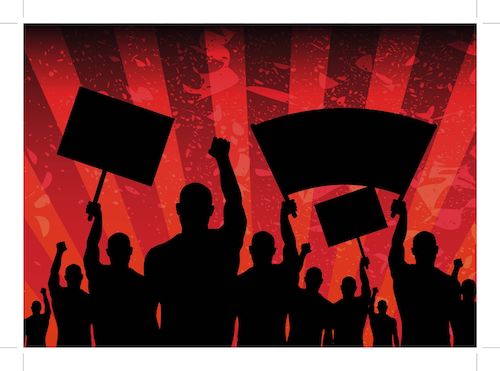Rethinking insurgency: Social movements and revolutionary vanguards in Central America
DOI:
https://doi.org/10.18504/pl2856-003-2020Keywords:
revolution, social movements, insurgency, Nicaragua, El Salvador, GuatemalaAbstract
Throughout the twentieth century, social revolutions in Latin America were the work of broad urban-rural multiclass and multi-ethnic revolutionary coalitions. In other cases, however, broad revolutionary coalitions were unable to defeat the regimes they faced. The resistance that different political regimes showed against revolutionary challenges has been up to now the factor on which literature has focused to explain these different outcomes. In a novel way, this article explores the internal dynamics of revolutionary coalitions, focusing on the relationship between revolutionary elites and social movements. To this end, we compare the relationships established between elites and movements in three cases with different outcomes: Nicaragua, El Salvador and Guatemala. The paper argues that different levels of autonomy of the social movements from insurgent elites are also an important factor in the explanation of the triumphs or failures of revolutionary coalitions.
Downloads
References
Albizures, M. A. & Ruano Najarro, E. (2009). ¿Por qué ellas y ellos? En memoria de los mártires, desaparecidos y sobrevivientes del movimiento sindical de Guatemala. Guatemala: ODHAG.
Almeida, P. (2008). Waves of Protest. Popular Struggle in El Salvador, 1925-2005. Mineápolis: University of Minnesota Press.
Ascoli, J. F. (s. f.). Memoria de la Historia. Organización y lucha de las comunidades del nor-oriente del departamento de Chalatenango, El Salvador (1974-1994). Inédito.
Berryman, P. (1984). Religious roots of rebellion. Christian in the Central American Revolution. Washington: Orbis Book.
Cabestrero, T. (1983). Ministros de Dios, Ministros del Pueblo. Managua: Ministerio de Cultura.
Colburn, F. D. (1994). The vogue of revolution in poor countries. Princeton: Princeton University Press.
Chávez, J. M. (2017). Poets and prophets of the resistance. Intellectuals and the origins of El Salvador’s Civil War. Nueva York: Oxford University Press. DOI: https://doi.org/10.1093/acprof:oso/9780199315512.001.0001
Dunkerley, J. (1994). The pacification of Central America: Political change in the Isthmus, 1987-1993. Londres: Verso.
Dunkerley, J. (1988). Power in the Isthmus. Londres: Verso.
Falla, R. (2015). Al atardecer de la vida… Escritos de Ricardo Falla, sj. Volumen 3. Ixcán. El campesino indígena se levanta. Guatemala 1966-1982. Guatemala: Universidad Rafael Landívar/AVANCSO/Universidad de San Carlos de Guatemala.
Foran, J. (2005). Taking power. On the origins of third world revolutions. Cambridge: Cambridge University Press. DOI: https://doi.org/10.1017/CBO9780511488979
Gilbert, D. (1988). Sandinistas. Cambridge: Basil Blackwell.
Goldstone, J. (2003). Revolutions. theoretical, comparative and historical studies. Toronto: Thomson/Wadsworth.
Goodwin, J. (2001). No other way out: States and revolutionary movements, 1945-1991. Cambridge: Cambridge University Press. DOI: https://doi.org/10.1017/CBO9780511812125
Hodges, D. C. (1986). Intellectual origins of Nicaraguan Revolution. Austin: University of Texas Press. DOI: https://doi.org/10.7560/738386
Invernizzi, G., Pisani, F. & Ceberio, J. (1986). Sandinistas. Managua: Vanguardia.
Levine, D. H. (1996). Voces populares en el catoliciosmo latinoamericano. Caracas: Centro de Estudios Políticos y Sociales.
Malthaner, S. & Waldmann, P. (2014). The radical milieu: Conceptualizing the supportive environment of terrorist groups. Studies in Conflict and Terrorism, 37(12), 979-998. DOI: https://doi.org/10.1080/1057610X.2014.962441
Martín Álvarez, A. & Cortina Orero, E. (2017). The Salvadoran Armed Left and Revolutionary Violence (1970-1980). En S. Huhn & H. Warnecke (Eds.), Politics and history of violence and crime in Central America (pp. 147-182). Londres: Palgrave Mcmillan. DOI: https://doi.org/10.1057/978-1-349-95067-6_6
Martí i Puig, S. (2012). La revolución enredada. Nicaragua 1977-1996. Madrid: La Catarata.
Martí i Puig, S. & Close, D. (2012). The sandinistas and Nicaragua since 1979. En D. Close & S. Martí i Puig (Eds.), The sandinistas & Nicaragua since 1979 (pp. 1-21). Nueva York: Lynne Rienner Publishers. DOI: https://doi.org/10.1515/9781626371606-001
Monsanto, P. (2013). Somos los jóvenes rebeldes. Guatemala insurgente. Guatemala: FyG.
Oikión, V. (2010). Un encuentro decisivo en la encrucijada revolucionaria la influencia del PORT en el Movimiento Revolucionario 13 de Noviembre. En A. Martín Álvarez (Ed.), La izquierda revolucionaria latinoamericana (pp. 51-89). México: Universidad de Colima.
Panebianco, A. (1990). Modelos de partido. Madrid: Alianza.
Parsa, M. (2000). States, ideologies and social revolutions. Cambridge: Cambridge University Press. DOI: https://doi.org/10.1017/CBO9780511491054
Payeras, M. (1998). Los días de la selva. Guatemala: Piedra Santa.
Pearce, J. (1986). Promised land. Peasant rebellion in Chalatenango El Salvador. Londres: Latin American Bureau. DOI: https://doi.org/10.3362/9781909013407
Pirker, K. (2017). La redefinición de lo posible. Militancia política y movilización social en El Salvador (1970 a 2012). México: Instituto Mora.
Pozas, V. (1988). La revolución sandinista (1979-1988). Madrid: Revolución.
Ramírez, S. (1980). El pensamiento vivo de Sandino. La Habana: Casa de las Américas.
Selser, G. (1960). Sandino: general de hombres libres. La Habana:
Skocpol, T. (1979). States and social revolutions: A comparative analysis of France, Russia and China. Cambridge: Cambridge University Press. DOI: https://doi.org/10.1017/CBO9780511815805
Randall, M. (1983). Cristianos en la revolución. Managua: Nueva Nicaragua.
Santa Cruz Mendoza, S. (2004). Insurgentes. Guatemala, la paz arrancada. México: ERA.
Selbin, E. (1993). Modern Latin American revolutions. Boulder: Westview Press.
Spalding, R. (2013). Social Movements in Central America. En D. Sánchez-Ancoechea & S. Martí i Puig (Eds.), Handbook on Central American governance (pp. 215-243). Londres: Routledge. DOI: https://doi.org/10.4324/9780203073148-16
Thomas, M. (2013). La gran confrontación: El segundo ciclo revolucionario 1972-1983. En V. Álvarez-Aragón, C. Figueroa Ibarra, A. Taracena Arriola, S. Tischler Visquerra & E. Urrutia García (Eds.), Guatemala: Historia reciente (1954-1996). Tomo II. La dimensión revolucionaria (pp. 121-192). Guatemala: Flacso Guatemala.
Tismaneanu, V. (1999). The revolutions of 1989. Londres: Routledge.
Vázquez Olivera, M. & Campos Hernández, F. (2019). The second cycle of the Guatemalan insurgency. En D. Kruijt, E. Rey Tristán & A. Martín Álvarez (Eds.), Latin American guerrilla movements: Origins, evolution, outcomes (pp. 151-163). Londres: Routledge. DOI: https://doi.org/10.4324/9780429244063-17
Vilas, C. M. (1991). Del colonialismo a la autonomía: modernización capitalista y revolución social en la costa atlántica. Managua: Nueva Nicaragua.
Vilas, C. M. (1984). Perfiles de la Revolución Sandinista. Liberación nacional y transformaciones sociales en Centroamérica. La Habana: Casa de las Américas.
Wickham-Crowley, T. (1992). Guerrillas and revolution in Latin America: A comparative study of insurgents and regimes since 1956. Princeton: Princeton University Press. DOI: https://doi.org/10.1515/9780691190204

Downloads
Published
Citas a este artículo:
How to Cite
Issue
Section
License
![]() Esta obra está bajo una licencia Atribución-NoComercial 4.0 Internacional (CC BY-NC 4.0)
Esta obra está bajo una licencia Atribución-NoComercial 4.0 Internacional (CC BY-NC 4.0)










